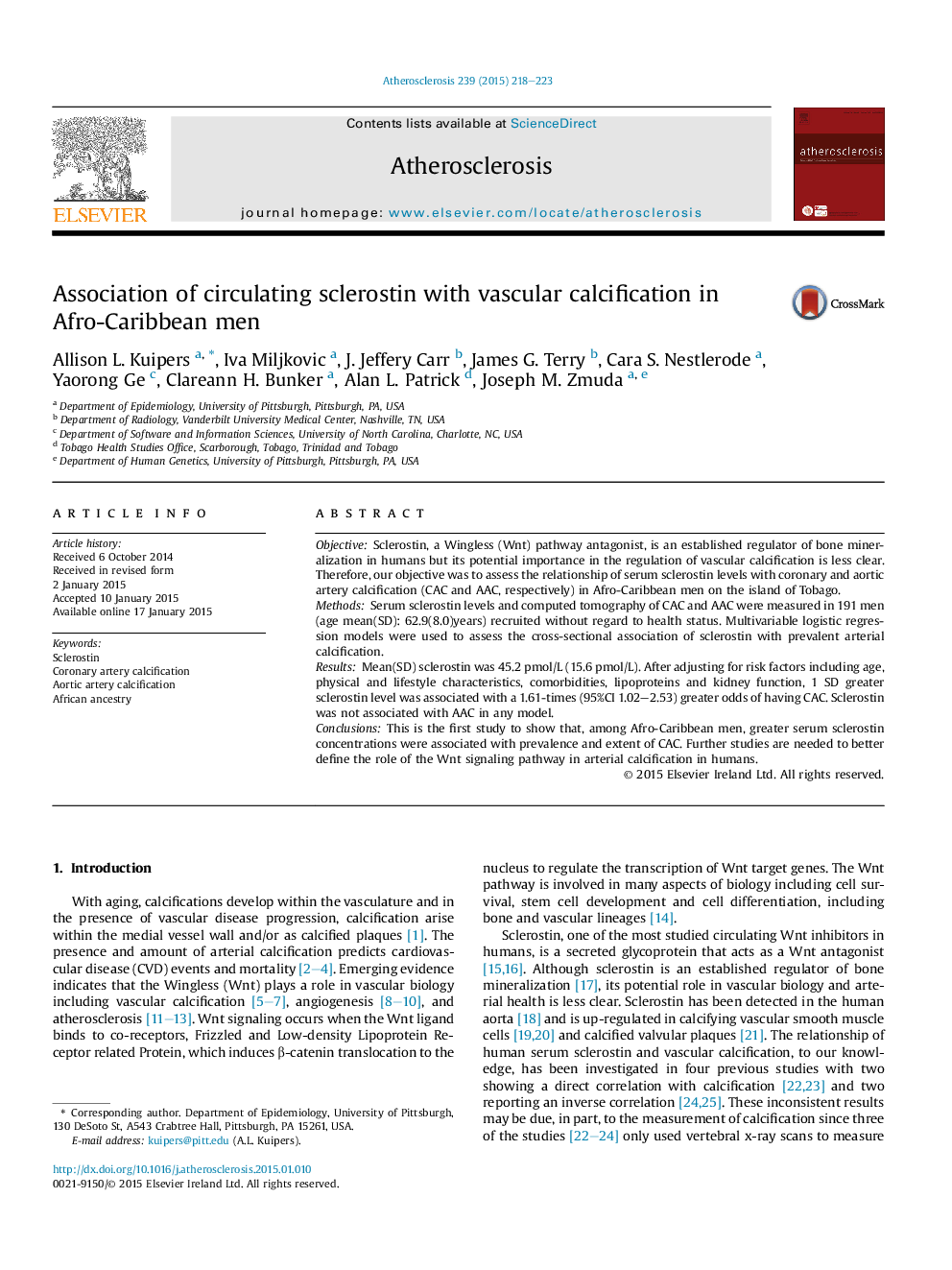| Article ID | Journal | Published Year | Pages | File Type |
|---|---|---|---|---|
| 5944988 | Atherosclerosis | 2015 | 6 Pages |
â¢Serum sclerostin, a Wingless pathway antagonist, and vascular calcification were measured in 191 Afro-Caribbean men.â¢Multivariable logistic regression was used to assess the association of sclerostin with prevalent vascular calcification.â¢In fully adjusted models, greater sclerostin was associated with greater odds of having coronary artery calcification.â¢Sclerostin was not associated with aortic artery calcification in any model.
ObjectiveSclerostin, a Wingless (Wnt) pathway antagonist, is an established regulator of bone mineralization in humans but its potential importance in the regulation of vascular calcification is less clear. Therefore, our objective was to assess the relationship of serum sclerostin levels with coronary and aortic artery calcification (CAC and AAC, respectively) in Afro-Caribbean men on the island of Tobago.MethodsSerum sclerostin levels and computed tomography of CAC and AAC were measured in 191 men (age mean(SD): 62.9(8.0)years) recruited without regard to health status. Multivariable logistic regression models were used to assess the cross-sectional association of sclerostin with prevalent arterial calcification.ResultsMean(SD) sclerostin was 45.2Â pmol/L (15.6Â pmol/L). After adjusting for risk factors including age, physical and lifestyle characteristics, comorbidities, lipoproteins and kidney function, 1 SD greater sclerostin level was associated with a 1.61-times (95%CI 1.02-2.53) greater odds of having CAC. Sclerostin was not associated with AAC in any model.ConclusionsThis is the first study to show that, among Afro-Caribbean men, greater serum sclerostin concentrations were associated with prevalence and extent of CAC. Further studies are needed to better define the role of the Wnt signaling pathway in arterial calcification in humans.
